Evolution of the Second-Phase Particles and Their Effect on Tensile Fracture Behavior of 2219 Al-xCu Alloys
Abstract
:1. Introduction
2. Materials and Methods
3. Results
3.1. Microstructures of As-Cast and Homogenized Alloys
3.2. Microstructures after MDF
3.3. Microstructures after Solution and Aging Treatment
3.4. Mechanical Properties and Tensile Fracture Morphology
4. Discussion
4.1. Refinement Mechanisms for the Second-Phase Particles
4.2. Effect of the Residual Second-Phase Particles on Tensile Fracture Behavior of 2219 Al-Cu Alloys
5. Conclusions
Author Contributions
Funding
Conflicts of Interest
References
- Nakai, M.; Eto, T. New aspect of development of high strength aluminum alloys for aerospace applications. Mater. Sci. Eng. A 2000, 285, 62–68. [Google Scholar] [CrossRef]
- Yang, Y.L.; Zhan, L.H.; Shen, R.L.; Yin, X.N.; Li, X.C.; Lia, W.K.; Huang, M.H.; He, D.Q. Effect of pre-deformation on creep age forming of 2219 aluminum alloy: Experimental and constitutive modeling. Mater. Sci. Eng. A 2017, 683, 227–235. [Google Scholar] [CrossRef]
- Mendez, P.F.; Eagar, T.W. Welding processes for aeronautics. Adv. Mater. Process. 2001, 159, 39–43. [Google Scholar]
- Xu, D.F.; Chen, S.Y.; Yu, F.; Chen, K.H.; Liu, D.B. Composition segregation behavior of 2219 aluminum alloy ingot with big size and the effect of multi-axial forging and solution-aging treatment on microstructure and mechanical properties. Chin. J. Nonferrous Met. 2017, 27, 2451–2459. [Google Scholar]
- Huang, M.S.; Li, Z.H. Size effects on stress concentration induced by a prolate ellipsoidal particle and void nucleation mechanism. Int. J. Plast. 2005, 21, 1568–1590. [Google Scholar] [CrossRef]
- Yu, F.; Xu, D.F.; Chen, S.Y.; Chen, K.H.; Liu, D.B. Effect of Cu Content on Anisotropy of Mechanical Property of Al-Cu-Mn Alloy. Chin. J. Mater. Res. 2018, 32, 854–860. [Google Scholar]
- Lu, Y.L.; Wang, J.; Li, X.C.; Li, W.; Li, R.L.; Zhou, D.S. Effects of pre-deformation on the microstructures and corrosion behavior of 2219 aluminum alloys. Mater. Sci. Eng. A 2018, 723, 204–211. [Google Scholar] [CrossRef]
- Grilli, R.; Baker, M.A.; Castle, J.E.; Dunn, B.; Watts, J.F. Localized corrosion of a 2219 aluminium alloy exposed to a 3.5% NaCl solution. Corros. Sci. 2010, 52, 2855–2866. [Google Scholar] [CrossRef] [Green Version]
- Osório, W.R.; Spinelli, J.E.; Freire, C.M.A.; Cardona, M.B.; Garcia, A. The roles of Al2Cu and of dendritic refinement on surface corrosion resistance of hypoeutectic Al-Cu alloys immersed in H2SO4. J. Alloys Compd. 2007, 443, 87–93. [Google Scholar] [CrossRef]
- Zhou, H.R.; Yao, W.; Du, C.W.; Song, S.P.; Wu, R. Corrosion behavior of the Al2Cu intermetallic compound and coupled Al2Cu-Al. Int. J. Electrochem. Sci. 2017, 12, 9542–9554. [Google Scholar] [CrossRef]
- Zhang, W.; Lin, B.; Cheng, P.; Zhang, D.T.; Li, Y. Effects of Mn content on microstructures and mechanical properties of Al-5.0Cu-0.5Fe alloys prepared by squeeze casting. Trans. Nonferrous Met. Soc. China 2013, 23, 1525–1531. [Google Scholar] [CrossRef]
- Backerud, L.; Chai, G.; Tamminen, J. Solidification Characteristics of Aluminum Alloys; American Foundrymen’s Society: Schaumburg, IL, USA, 1990; p. 266. [Google Scholar]
- Tseng, C.J.; Lee, S.L.; Wu, T.F.; Lin, J.C. Effects of Fe content on microstructure and mechanical properties of A206 alloy. Mater. Trans. JIM 2000, 41, 708–713. [Google Scholar] [CrossRef] [Green Version]
- Liu, K.; Cao, X.; Chen, X.G. Solidification of iron-rich intermetallic phases in Al-4.5Cu-0.3Fe cast alloy. Metall. Mater. Trans. A 2011, 42, 2005–2016. [Google Scholar] [CrossRef]
- Peng, H.; Li, R.Q.; Li, X.Q.; Ding, S.; Chang, M.J.; Liao, L.Q.; Zhang, Y.; Chen, P.H. Effect of multi-source ultrasonic on segregation of Cu elements in large Al-Cu alloy cast ingot. Materials 2019, 12, 2828. [Google Scholar] [CrossRef] [Green Version]
- Liu, Z.L.; Li, R.Q.; Jiang, R.P.; Zhang, L.H.; Li, X.Q. Scalable Ultrasound-Assisted Casting of Ultra-large 2219 Al Alloy Ingots. Metall. Mater. Trans. A 2019, 50, 1146–1152. [Google Scholar] [CrossRef]
- Zhang, L.; Li, X.Q.; Li, R.Q.; Jiang, R.P.; Zhang, L.H. Effects of high-intensity ultrasound on the microstructures and mechanical properties of ultra-large 2219 Al alloy ingot. Mater. Sci. Eng. A 2019, 763, 138–154. [Google Scholar] [CrossRef]
- Nejadseyfi, O.; Shokuhfar, A.; Azimi, A.; Shamsborhan, M. Improving homogeneity of ultrafine-grained/nano-structured materials produced by ECAP using a bevel-edge punch. J. Mater. Sci. 2015, 50, 1513–1522. [Google Scholar] [CrossRef]
- Saito, Y.; Utsunomiya, H.; Tsuji, N.; Sakai, T. Novel ultra-high straining process for bulk materials- development of the accumulative roll-bonding (ARB) process. Acta Mater. 1999, 47, 579–583. [Google Scholar] [CrossRef]
- Hebesberger, T.; Stüwe, H.P.; Vorhauer, A.; Wetscher, F.; Pippan, R. Structure of Cu deformed by high pressure torsion. Acta Mater. 2005, 53, 393–402. [Google Scholar] [CrossRef]
- He, H.L.; Yi, Y.P.; Huang, S.Q.; Zhang, Y.X. Effects of deformation temperature on second-phase particles and mechanical properties of 2219 Al-Cu alloy. Mater. Sci. Eng. A 2018, 712, 414–423. [Google Scholar] [CrossRef]
- Wang, Y.P.; Hu, J.W.; Xu, X.Y.; Liu, D.F.; Jiang, H.Z.; Wang, X.Y.; Yan, Y.B. Research Progress of Effect of Multi-directional Forging on Microstructure and Properties of Aluminum Alloys. Mater. Rep. China 2019, 33, 2266–2271. [Google Scholar]
- Moghanaki, S.K.; Kazeminezhad, M.; Logéb, R. Heating rate effect on particle stimulated nucleation and grains structure during non-isothermal annealing of multi-directionally forged solution treated AA2024. Mater. Charact. 2017, 127, 317–324. [Google Scholar] [CrossRef]
- Donatus, U.; Terada, M.; Ospinac, C.R.; Queiroz, F.M.; Bugarin, A.F.S.; Costa, I. On the AA2198-T851 alloy microstructure and its correlation with localized corrosion behaviour. Corros. Sci. 2018, 131, 300–309. [Google Scholar] [CrossRef]
- Shen, Z.J.; Liu, C.H.; Ding, Q.; Wang, S.B.; Wei, X.; Chen, L.; Li, J.X.; Zhang, Z. The structure determination of Al20Cu2Mn3 by near atomic resolution chemical mapping. J. Alloys Compd. 2014, 601, 25–30. [Google Scholar] [CrossRef]
- Sharma, V.M.J.; Kumar, K.S.; Rao, N.B.; Pathak, S.D. Effect of microstructure and strength on the fracture behavior of AA2219 alloy. Mater. Sci. Eng. A 2009, 502, 45–53. [Google Scholar] [CrossRef]
- Belov, N.A.; Eskin, D.G.; Aksenov, A.A. Multicomponent Phase Diagrams: Applications for Commercial Aluminum Alloys; Elsevier: Amsterdam, The Netherlands, 2005; pp. 164–167. [Google Scholar]
- Xu, D.F.; Chen, K.H.; Chen, Y.Q.; Xing, J.; Chen, S.Y.; Li, X.Q. Effect of Fe Contents on Microstructure and Properties of 2219 aluminum alloy forgings. J. Hunan Univ. (Nat. Sci.) 2020, 6, 1–11. [Google Scholar]
- Popov, E.P. Mechanics of Materials, 2nd ed.; Prentice-Hall Inc: Up Saddle River, NJ, USA, 1976; pp. 252–260. [Google Scholar]
- William, F.S.; Javad, H.; Presuel-Moreno, F. Foundations of Materials Science and Engineering; McGraw-Hill: New York, NY, USA, 2006; pp. 194–197. [Google Scholar]
- Liu, G.; Sun, J.; Nan, C.W.; Chen, K.H. Experiment and multiscale modeling of the coupled influence of constituents and precipitates on the ductile fracture of heat-treatable aluminum alloys. Acta Mater. 2005, 53, 3459–3468. [Google Scholar] [CrossRef]
- Liu, G.; Zhang, G.J.; Ding, X.D.; Sun, J.; Chen, K.H. Dependence of fracture toughness on multiscale second phase particles in high strength Al alloys. Mater. Sci. Technol. 2003, 19, 887–896. [Google Scholar] [CrossRef]
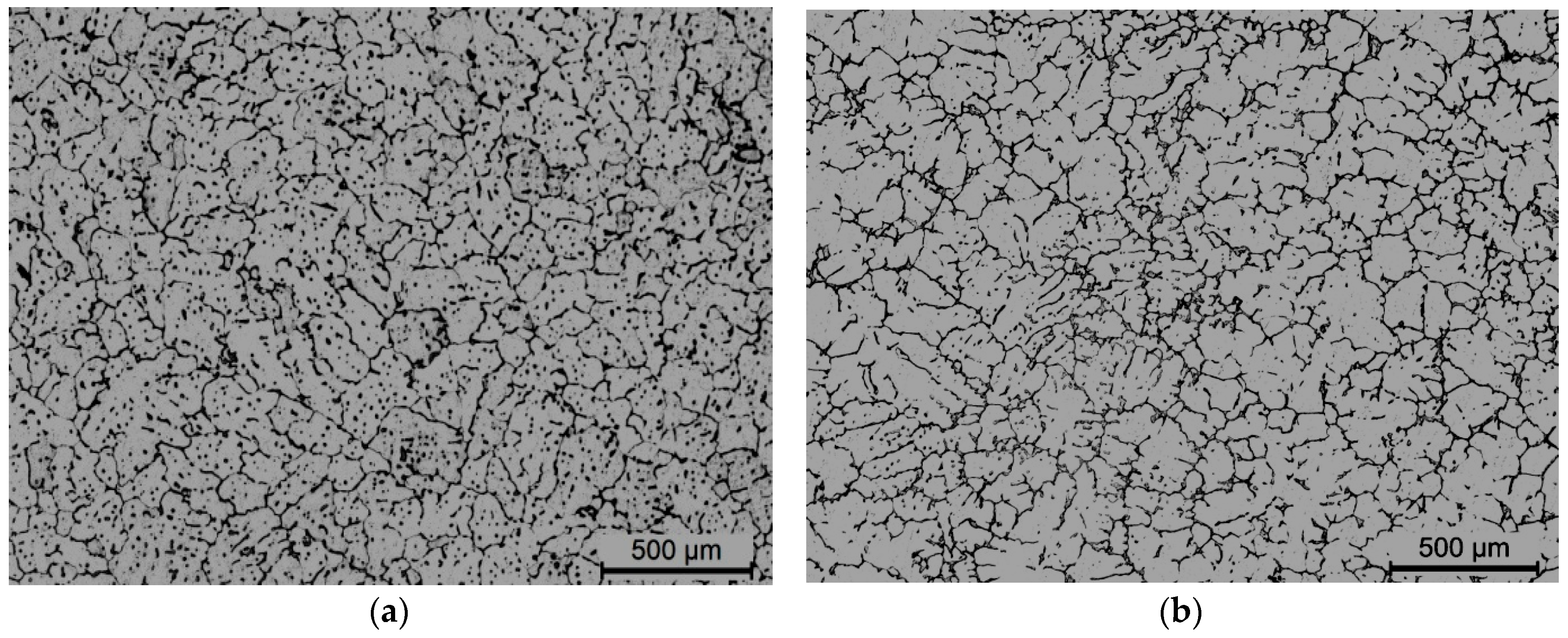

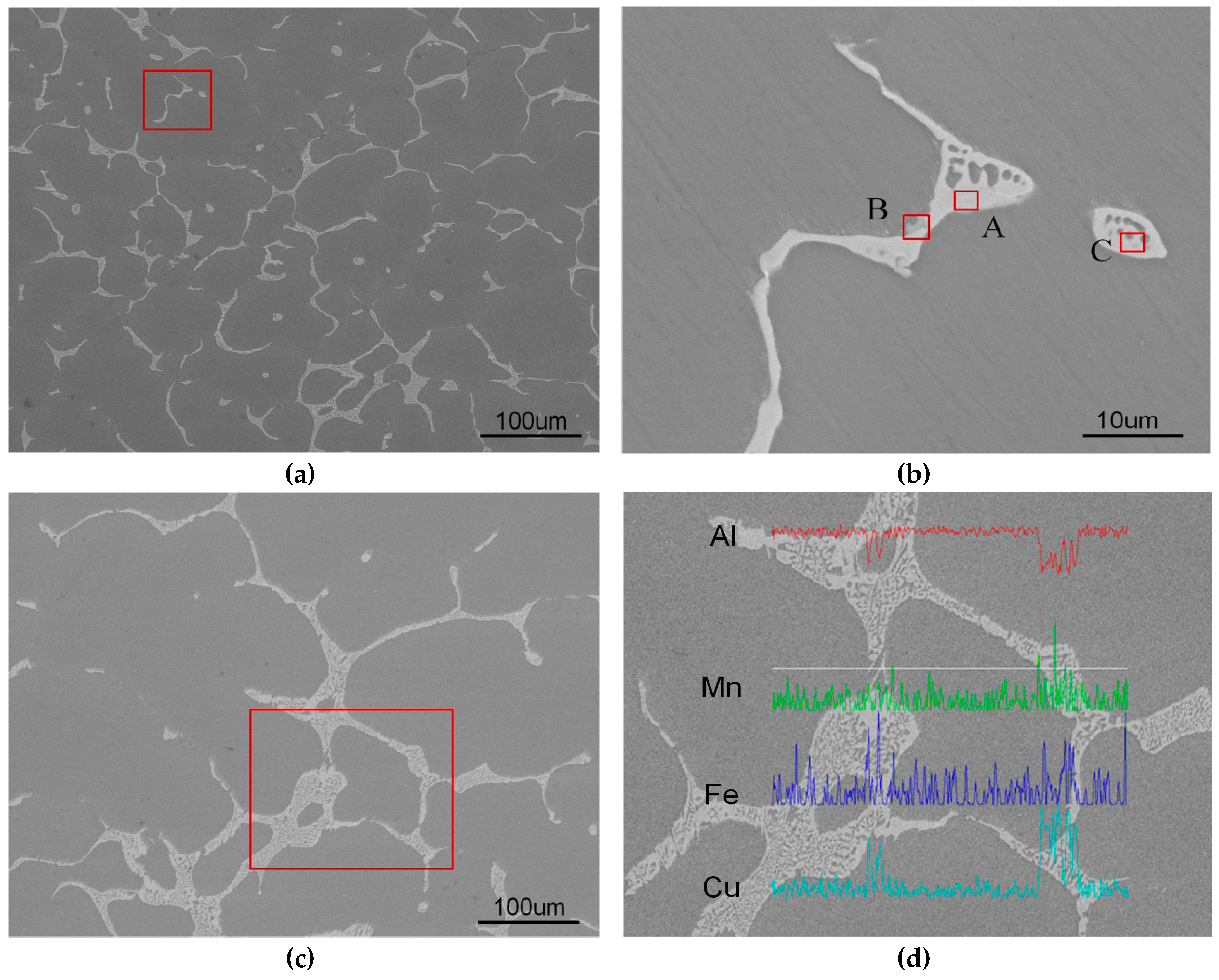

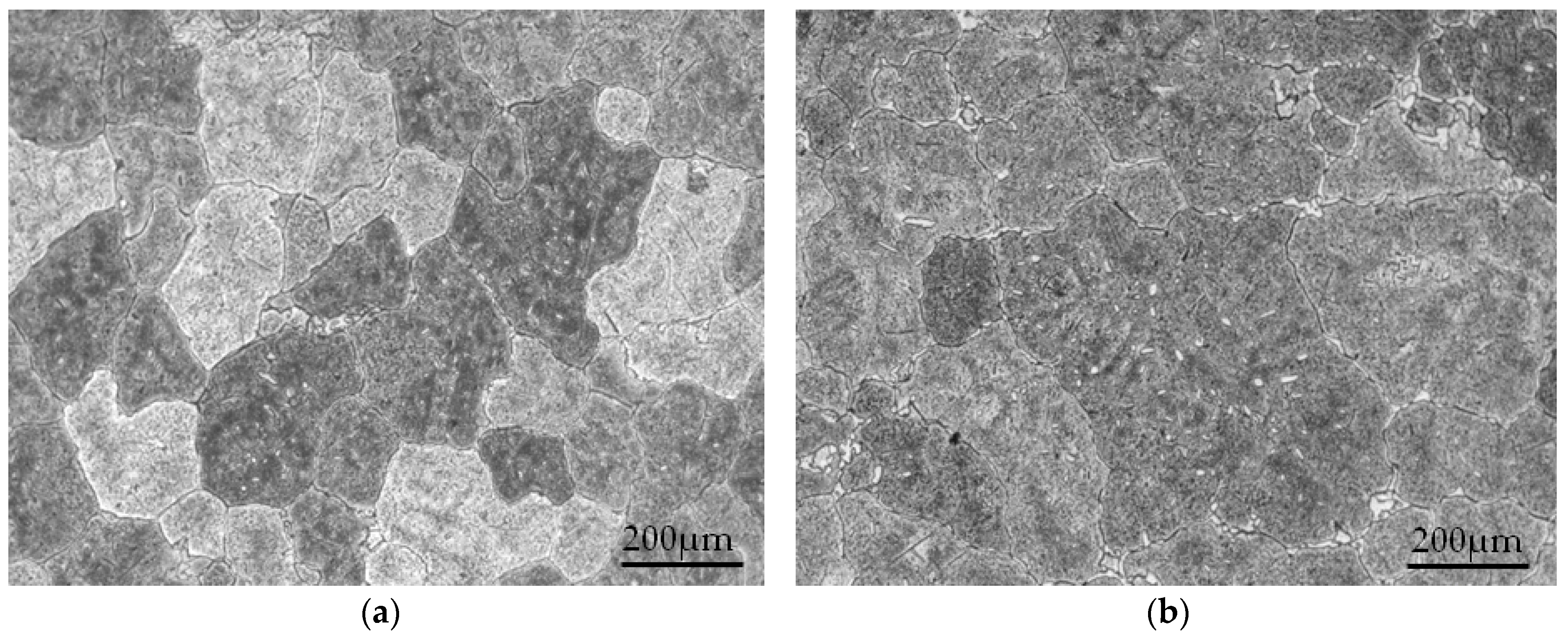
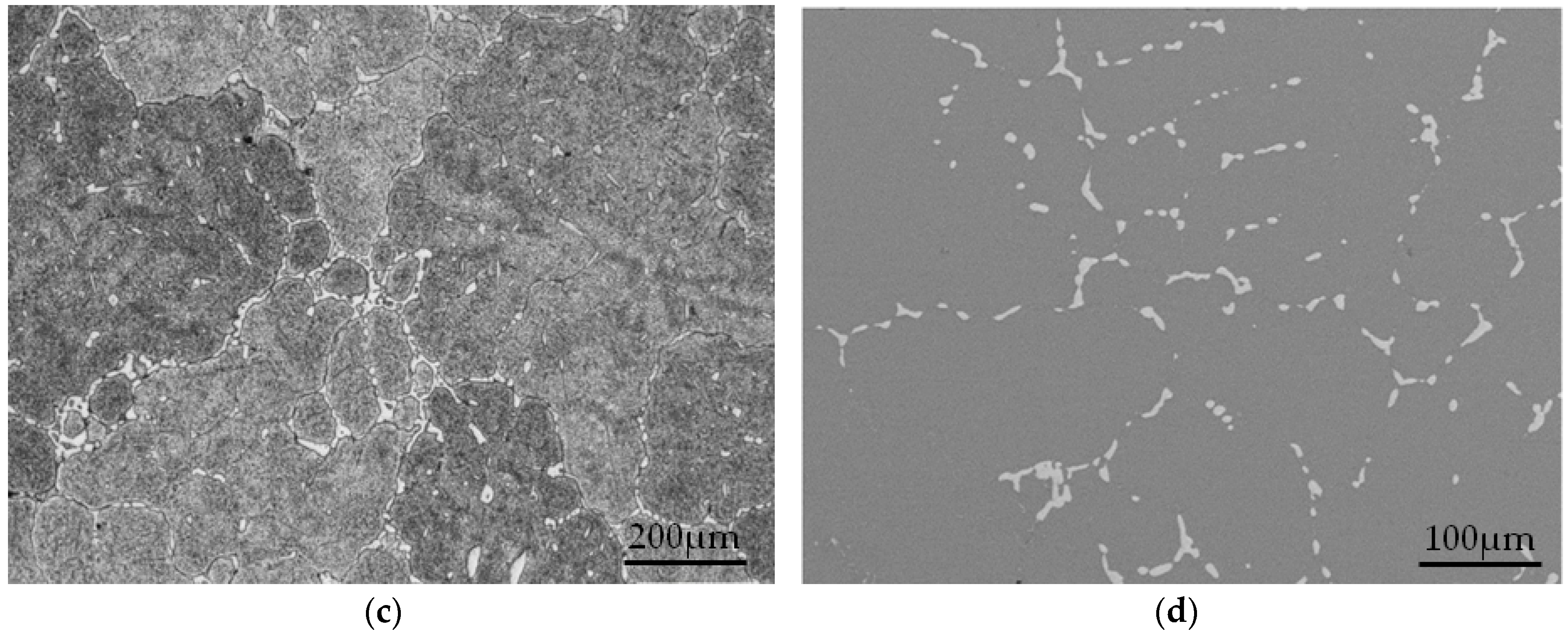
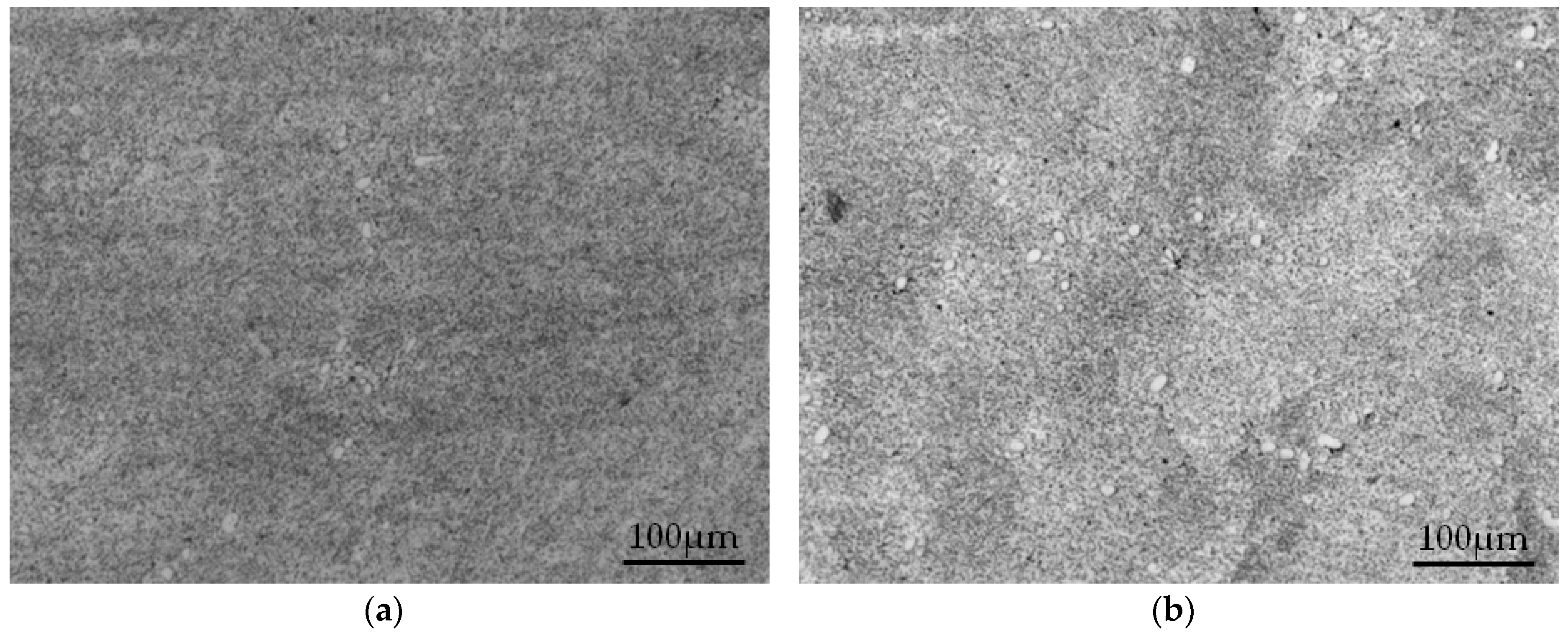
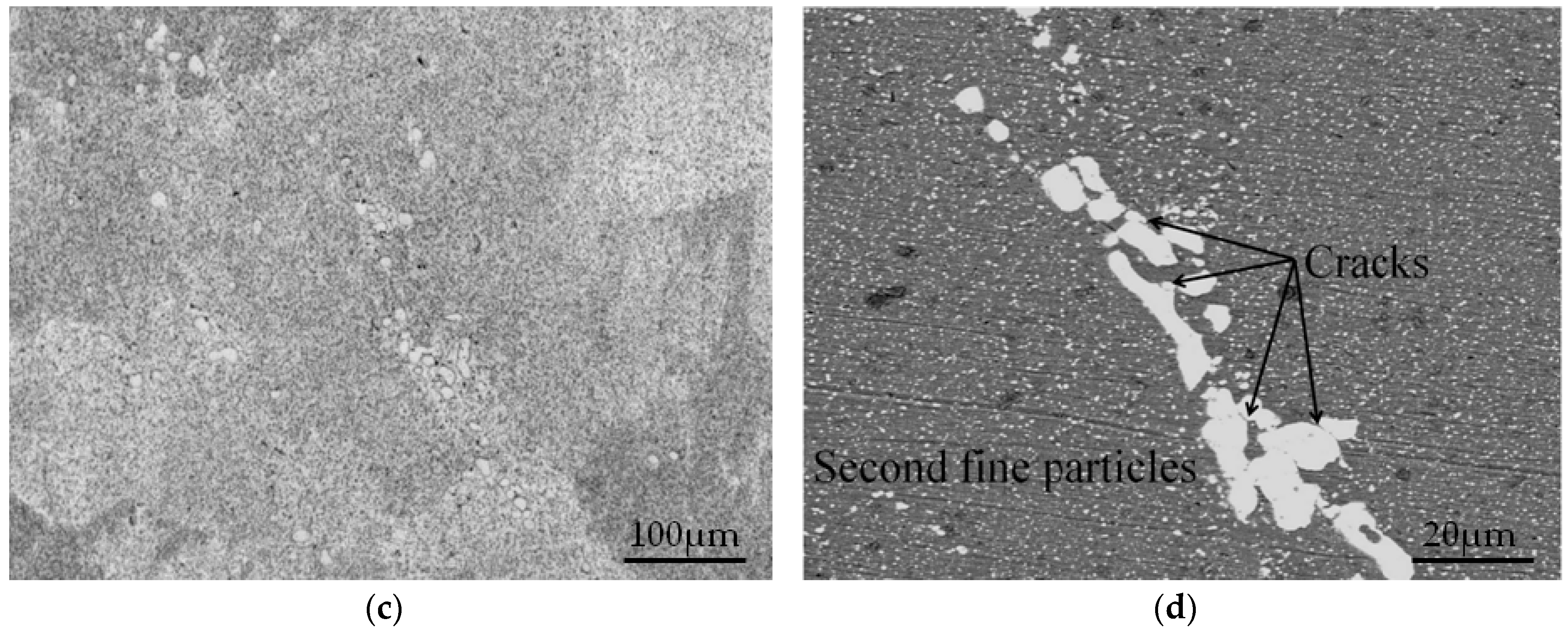
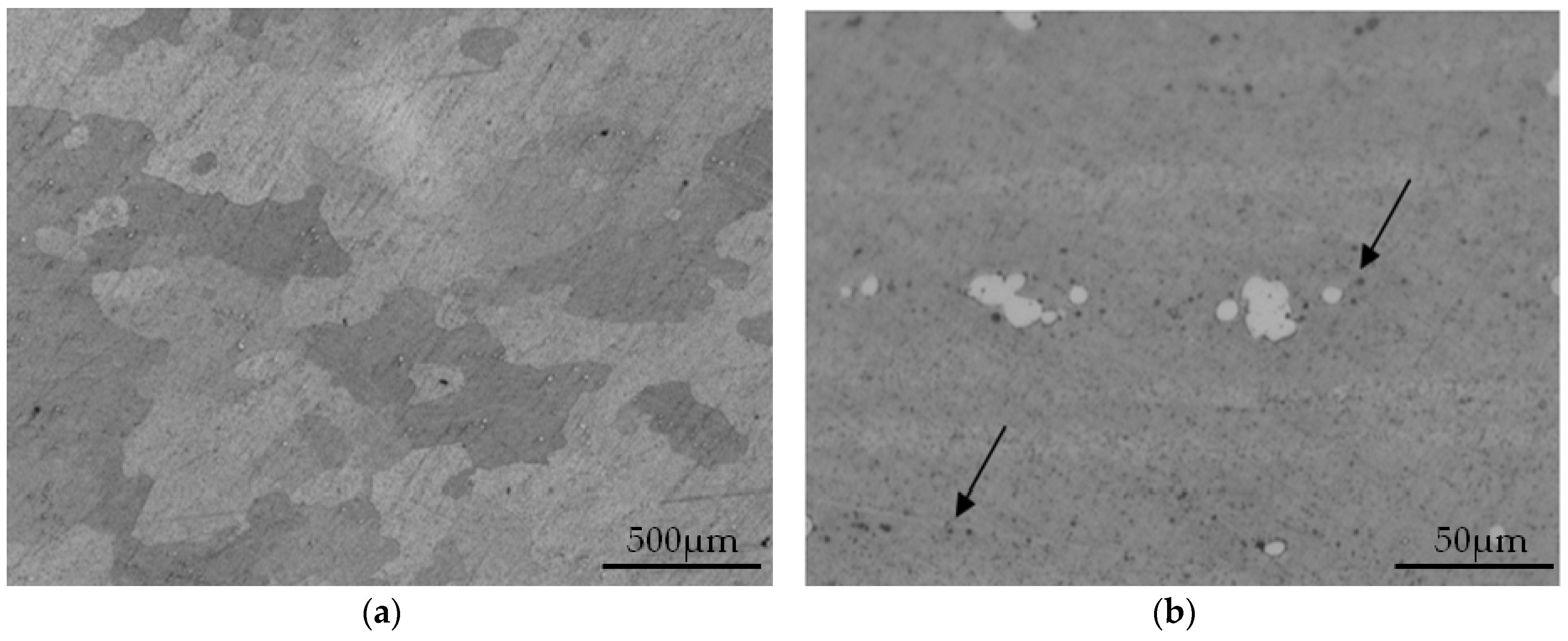
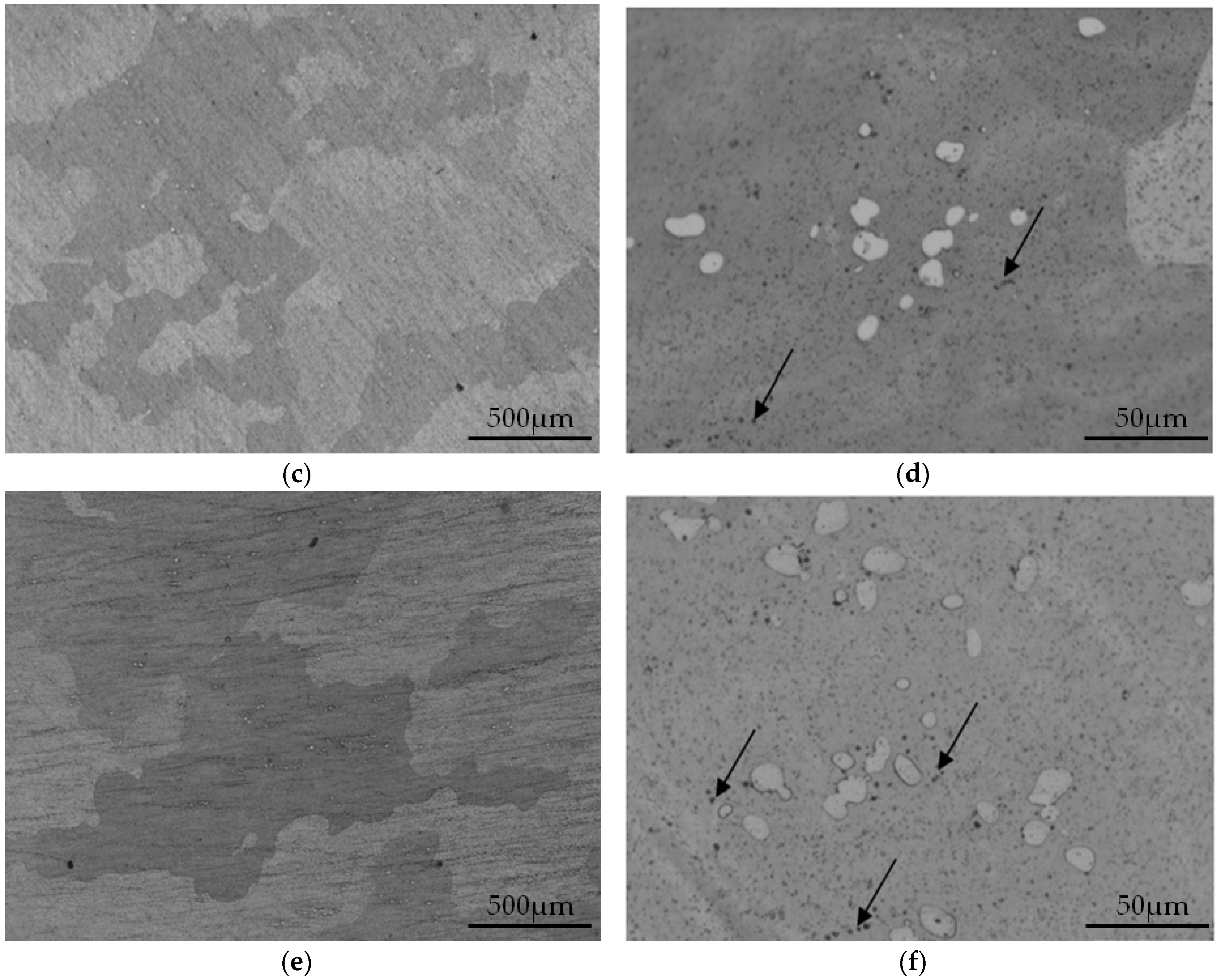
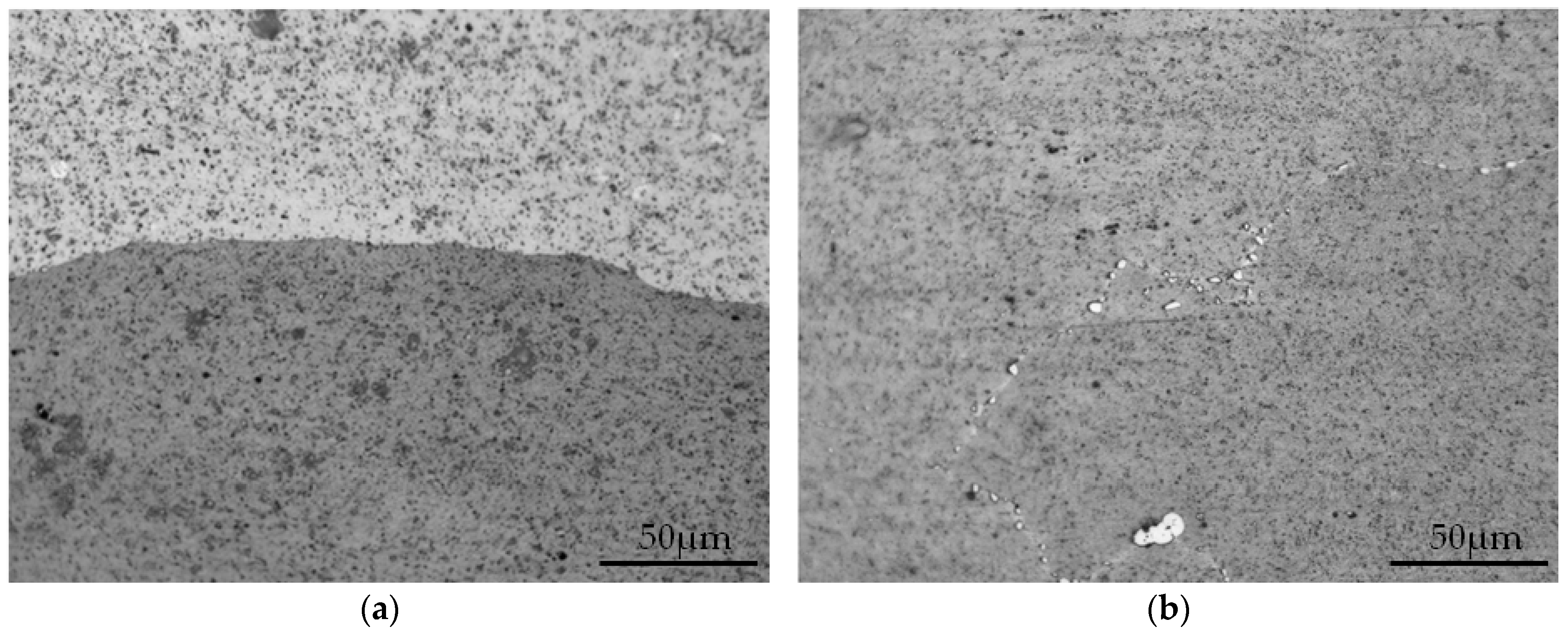
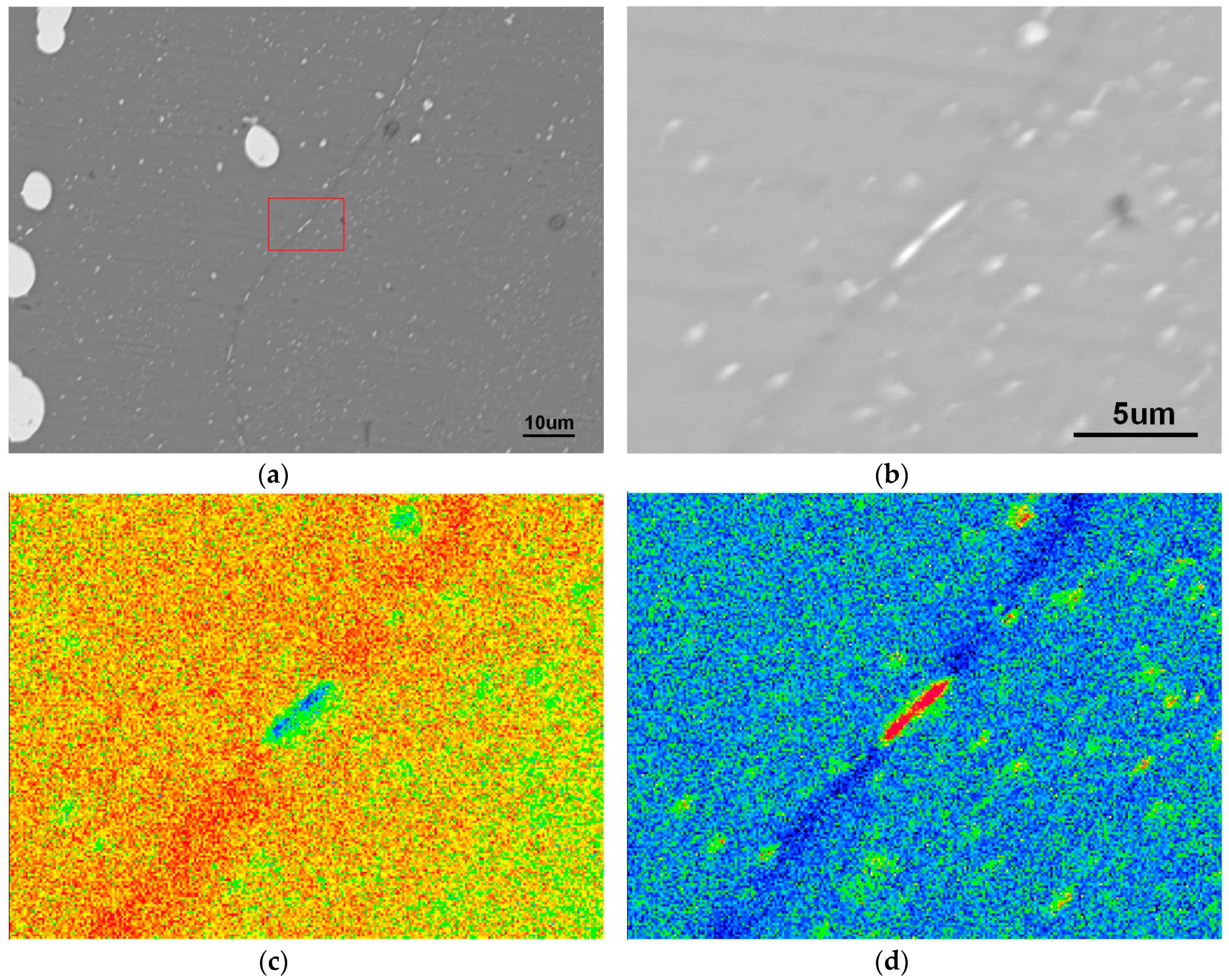


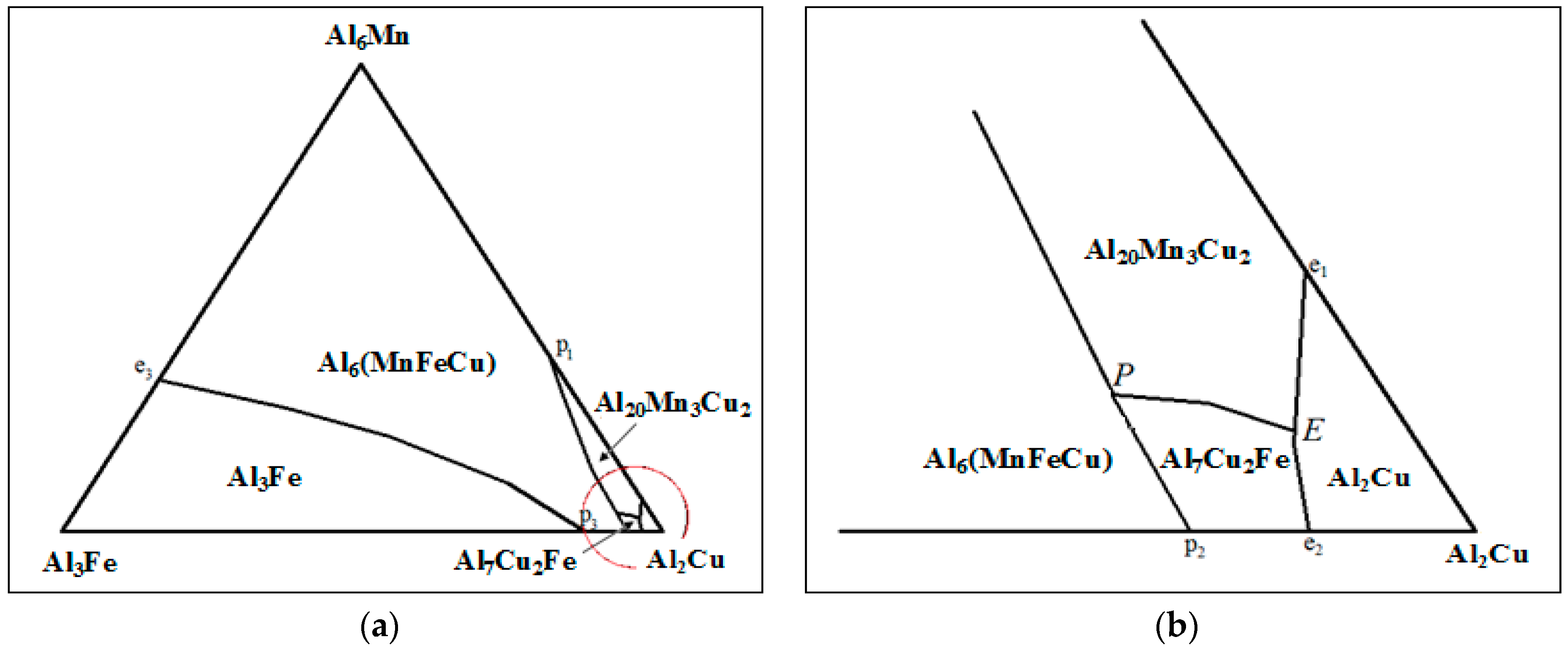
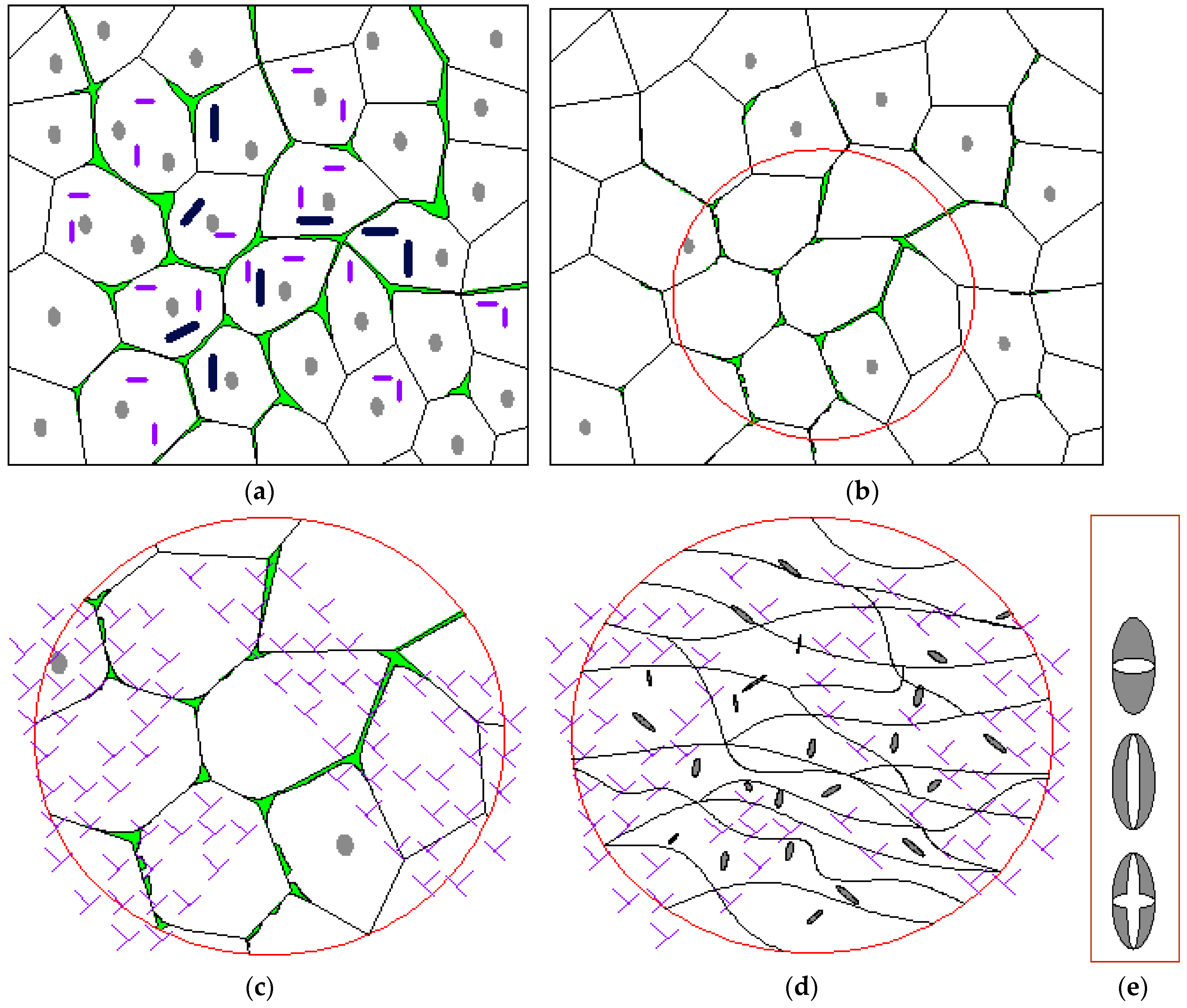

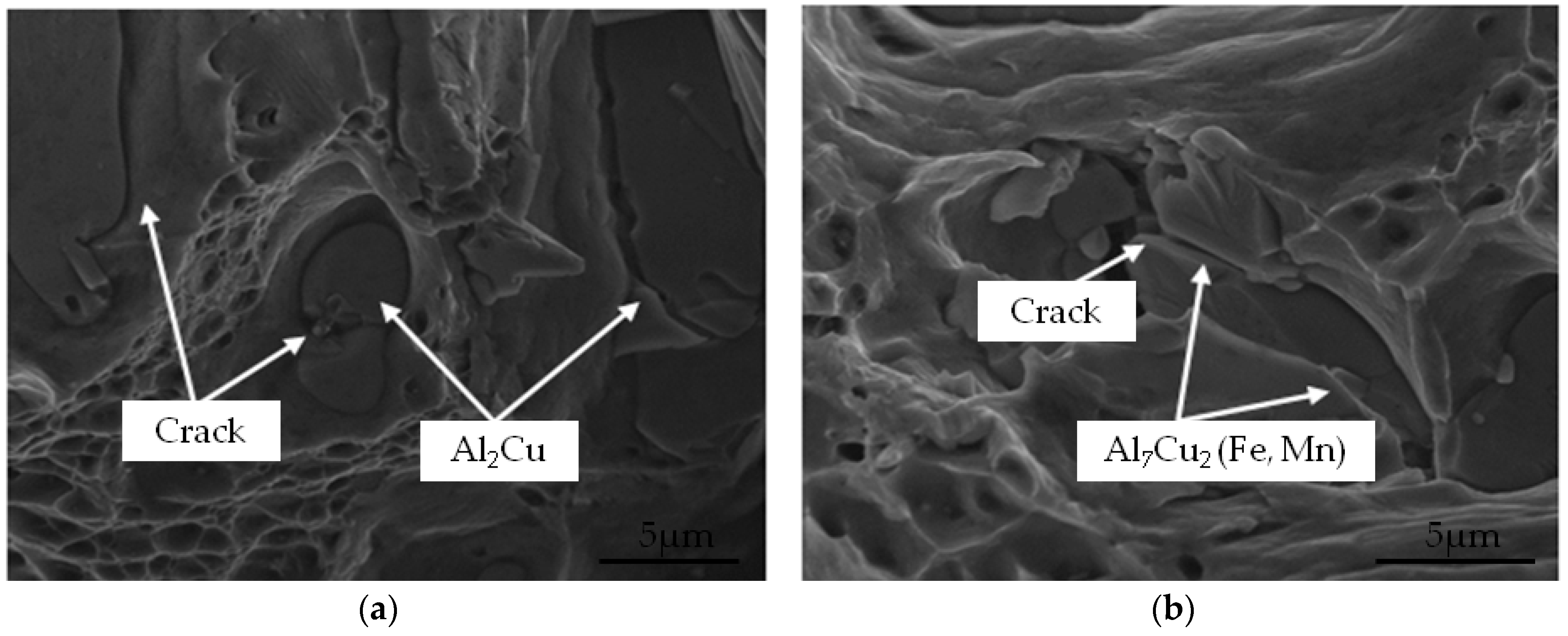
| Sample No. | Cu | Mn | Fe | Si | Mg | Zn | Ti | V | Zr | Al |
|---|---|---|---|---|---|---|---|---|---|---|
| 2219-5.56Cu | 5.56 | 0.362 | 0.10 | 0.0005 | ≤0.02 | ≤0.1 | ≤0.1 | 0.05–0.15 | 0.10–0.25 | Bal. |
| 2219-6.15Cu | 6.15 | 0.356 | 0.09 | 0.0005 | ≤0.02 | ≤0.1 | ≤0.1 | 0.05–0.15 | 0.10–0.25 | Bal. |
| 2219-6.52Cu | 6.52 | 0.358 | 0.09 | 0.0005 | ≤0.02 | ≤0.1 | ≤0.1 | 0.05–0.15 | 0.10–0.25 | Bal. |
© 2020 by the authors. Licensee MDPI, Basel, Switzerland. This article is an open access article distributed under the terms and conditions of the Creative Commons Attribution (CC BY) license (http://creativecommons.org/licenses/by/4.0/).
Share and Cite
Xu, D.; Chen, K.; Chen, Y.; Chen, S. Evolution of the Second-Phase Particles and Their Effect on Tensile Fracture Behavior of 2219 Al-xCu Alloys. Metals 2020, 10, 197. https://doi.org/10.3390/met10020197
Xu D, Chen K, Chen Y, Chen S. Evolution of the Second-Phase Particles and Their Effect on Tensile Fracture Behavior of 2219 Al-xCu Alloys. Metals. 2020; 10(2):197. https://doi.org/10.3390/met10020197
Chicago/Turabian StyleXu, Daofen, Kanghua Chen, Yunqiang Chen, and Songyi Chen. 2020. "Evolution of the Second-Phase Particles and Their Effect on Tensile Fracture Behavior of 2219 Al-xCu Alloys" Metals 10, no. 2: 197. https://doi.org/10.3390/met10020197




